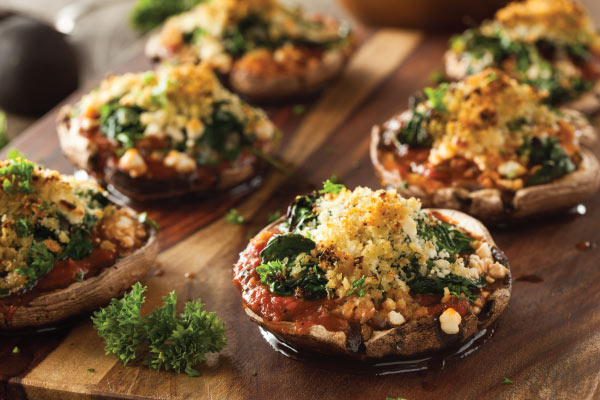Your marriage ceremony and the special vows you say to each other will be what remains fresh in your minds for years to come. However, what your guests are likely to talk about is something else entirely: your reception. In addition to the venue and the entertainment, the menu will long be remembered as a high point in many conversations if you choose wisely. The wedding industry has undergone a massive transformation in the last few years. That is certainly true for how the ceremonies themselves are conducted, but it doesn’t stop there. The choices that were available to your parents concerning the reception have been expanded and amplified in today’s incredibly customizable environment. What that gives to couples today is the opportunity to make their menu compliment the atmosphere they want to create. Here are just some of the dinner options that have become popular in recent years:
The Plated Dinner
This is the most traditional of the catering styles and probably the one your parents are the most familiar with. The reception room is usually made up of several round tables, each seating 8-10 guests. They will typically be served a three-course dinner consisting of appetizer, entrée and dessert. Occasionally, a fourth intermezzo course, or palette cleanser, is served before the entrée. Although the selection of plate choices is generally pre-determined by the caterer, you still do have some leeway when it comes to what meals will be served. Of course, it varies according to the venue. The sit-down dinner style is best for couples seeking a tidy, traditional feel. Whether your wedding is intimate or grand, this set-up can work to your advantage. Pros: The nature of a seated dinner enables your guests to have more time to get acquainted with each other. Food waste is minimized since you have a very good idea ahead of time how many guests you will be feeding. Activities such as get-acquainted games and dances can be interspersed between courses to keep things lively and interesting. Cons: Keep in mind that it requires more staff to prepare and serve a sit-down meal, so you will have to budget accordingly. Picky guests may leave much of their dinner uneaten, leading to food waste. Furthermore, you will need to have a specific table setting, centerpieces and a seating chart. If your family has complex relationships that you have a hard time keeping track of, this style could give you months of headaches. Finally, since each plate is pre-set and can be quite costly, this style is best for an adults-only dinner. If kids will be on the scene, offer a child-friendly menu that can be chosen ahead of time when your guests send in their RSVPs.Buffet
Usually served on long-sided tables, a buffet features a number of food options. Often, there is a meat, a fish and a vegetarian entrée from which guests can choose along with side dishes. A basket of bread or rolls is frequently placed on each table. This style, particularly suited to larger parties of 100 or more, is especially good if you wish to provide a variety of choices for your attendees. Pros: You can cater to numerous tastes, and everyone will get something they like. The cost can be lower than a plated meal service since fewer staff are required. Cons: Lines can be long. Inevitably some tables will need to wait to get the chance to go to the buffet table. The food can get cold, and popular dishes can potentially run out before all guests have gotten a chance to get their dinners. At the same time, less sought-after selections can go to waste.Standing Party
This is similar to a buffet in that the food is presented on long tables with people serving themselves. However, there is no guest seating. This type of arrangement is especially suited to very large parties of 500 or more friends and relatives. Pros: In addition to all of the previously described benefits of a buffet, the standing party lends itself to having more food areas scattered throughout your venue. Your large reception room will be buzzing with activity as guests wander from one food area to the next, making new acquaintances and catching up with old friends. Cons: Space between food areas can become an issue since no one will be sitting down. Furthermore, this arrangement can be unsuitable if you have older or disabled people who cannot stay on their feet for long periods of time.Food Stations
The food is arranged throughout your reception space in specific stations such as a raw bar, carving or pasta stations and a dessert area. Portions are usually smaller, leaving guests free to try a wider variety of items. Pros: People enjoy the ability to mingle and choose the dishes they like. Lines are kept to a minimum. Guests can get exactly what they want at cook-to-order stations. Cons: This style requires a spacious reception venue and additional staff to tend to all of the different stations. People who prefer larger portions might be disappointed.Family Style
Like a sit-down dinner, guests generally sit at pre-arranged tables, and waiters bring the food to them. However, in this case guests serve themselves from large platters of food just as they would at home. With Family Style, it’s like a buffet on every table. Pros:- Guests can eat right away, only taking the items they want. Conversations will start as people pass around various foods.
- You eat what you want in the quantities that you want.
- Tends to extend the duration of an event.
- For familial, more social, less formal
- It brings people together over an amazing meal.
Cocktail Style
Instead of providing a sit-down meal, you offer small items and hot and cold hors d’oeuvres and appetizers. These can be passed around by servers or made available on tables to enable guests to help themselves. Pros: This casual style lends itself to small venues with an informal feel. You can fit more people into less space because there are no tables. You and your significant other can easily circulate through the room, and your food budget can be more manageable. Cons: Some guests may be expecting a full meal and may be disappointed if they don’t get one. Be sure to specify that this is a “cocktail reception” in your invitation. As with the standing reception option, some guests may not be able to remain on their feet for the entire evening. If you are serving alcohol, your costs may be higher with this type of arrangement.Casual Dining
This is the “none of the above” choice that enables you to let your guests enjoy themselves with no special arrangements or restrictions. Such a casual option is especially nice at informal venues with small gatherings of guests. Pros: You can make the food exactly what you want and customize this setting to fit your unique style. Your budget can be smaller as well. Cons: This isn’t ideal for parties of over 50 because disorganization and even chaos can become the order of the day. Also, guests can become bored if their numbers are too large and there is no readily discernible structure to follow.One Item You Should Never Give Up
Your reception could be large or small, sit-down or casual. It could be held in a ballroom or a barn, and you could have everything from a chamber orchestra to a punk band. No matter what style you choose, one detail still seems to be traditional: the wedding cake. Nevertheless, your options are numerous.Other Wedding Menu Ideas
Making the perfect wedding food selections can feel overwhelming, but it doesn’t need to be. Use these suggestions to further guide your planning to make the process easier:- Consider the season. Heavy “comfort foods” are best in colder weather and might be too much during the height of summer. If your venue is outdoors, you also need to be mindful of leaving perishable ingredients unrefrigerated for long periods of time.
- Work with your venue’s manager. Ask what reception styles best suit the space you will be renting. You don’t want people to be either over-crowded or rattling around in a room that is far too spacious for the number of guests.
- Choose a cuisine you and your significant other like. It’s your wedding, which means you can offer your guests any types of entrees and side dishes you wish. That being said, remember that not everyone may be as adventurous as you are. Always provide a more conventional alternative such as grilled chicken, broiled fish or pasta with marinara sauce.
- Consider a fusion menu. This is especially fun if you and your partner are from different backgrounds. A creative combination of your culture-specific foods can give your guests exposure to tastes they have never experienced.
- Offer choices for people on special diets. This could include gluten-free, diabetic, vegetarian and vegan options. Also, don’t forget young diners, who are not known for departing from the few foods they like. Your guests will appreciate this thoughtful gesture. That being said, you can’t please everyone, and you will lose your mind if you try.






